
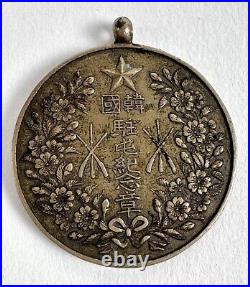
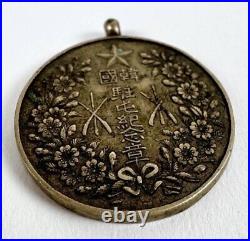
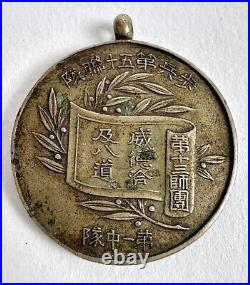
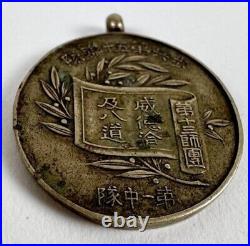
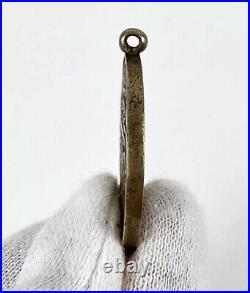
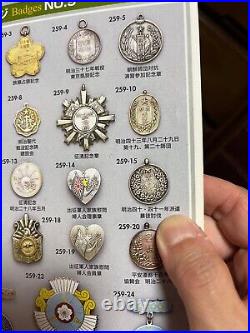

Antique Imperial Japanese medal. Front: “Korea Occupation Commemoration” Back: “15th Infantry Regiment, 1st Company, 13th Division” “Virtue and Benevolence to the Eight Provinces”. 15th Infantry Regiment: Established in Takasaki, fought in major conflicts. Inscriptions reflect Japan’s military presence in Korea. Intricate military and floral designs. Imperial Japanese Army memorabilia fans. Don’t miss this rare piece of history! It is expected to take more than a month to arrive.


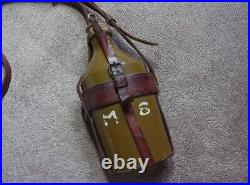
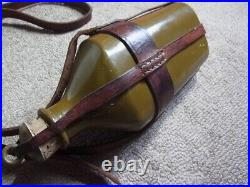
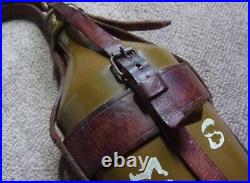


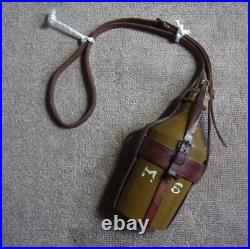
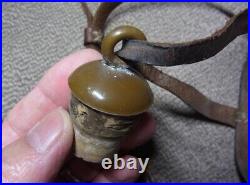

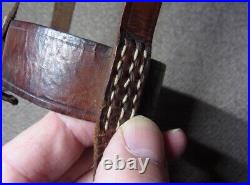
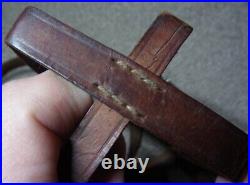
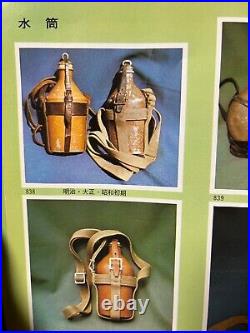

Antique Imperial japanese canteen. This authentic antique Imperial Japanese Army canteen is a remarkable relic from the past. The canteen’s paint remains comparatively pristine, a testament to its preservation over the years. This piece is not just a mere military item; it’s a slice of history, a connection to the daily life of a soldier from a time that shaped the world. Whether you’re a collector of military antiques or have a keen interest in World War II memorabilia, this canteen is a rare find that will take pride of place in any collection. International Buyers – Please Note. Thank you for your understanding.


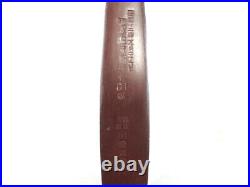
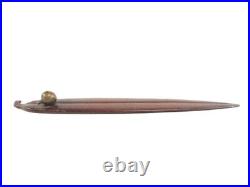
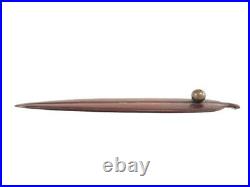
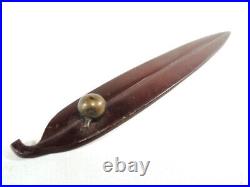
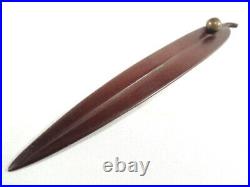


A paper knife commemorating the launch of the former Japanese Navy destroyer Arashio. It was distributed to those involved when the Arashio was launched in 1933. It is written in Japanese kanji. No noticeable scratches or stains. Arashio is the fourth Asashio-class destroyer of the Japanese Navy. It was completed in December 1937 (Showa 12). In March 1943 (Showa 18), she was heavily damaged and abandoned during the Battle of the Bismarck Sea, and was sunk by a U. How about military collector? International Buyers – Please Note.


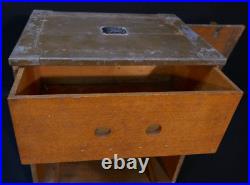
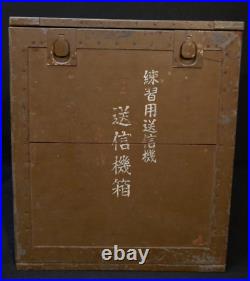
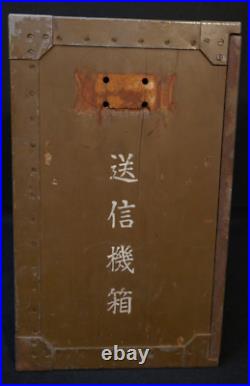
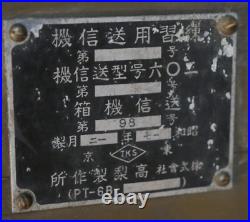
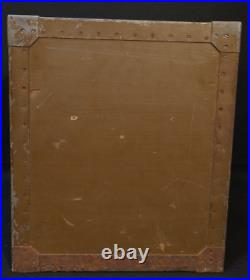
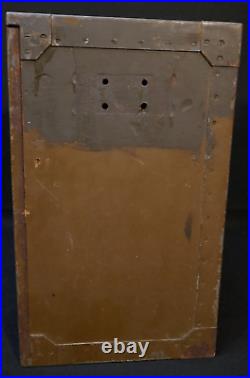
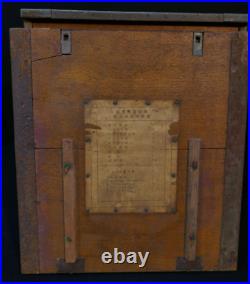
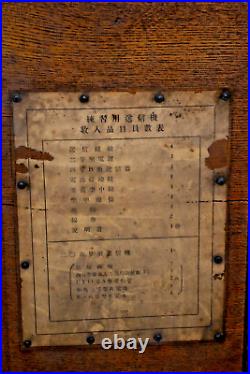

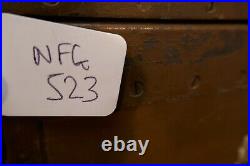

WWII Imperial Japanese Army IJA Type 60 Practice Radio Transmission Box TKS. Interwars – WWII WWII Imperial Japanese Army IJA Type 60 Practice Radio Transmission Box TKS (16 x 14 x 10) Small Field Desk Size Made in Kyoto, Has a Parts List that Includes Aerial Etc – No Components are Present, Good Issued. As Photographed with wear and side handles removed as seen – Early Production. A Nice Candidate for any Collection, Library, or Display. Recent Estate Collection Acquisition & Presented as Acquired, Rare – Excellent Display Piece! Check back often – we search estates and sources across the world to bring a fine selection of militaria. Please review all photos for details regarding the condition of the item listed – further condition information will be included in the listing as is relevant, if you need additional photographs or have questions regarding the condition please do not hesitate to ask. I describe all items to the best of my ability – please do not hesitate to ask any and all questions prior to the close of the listing. Mistakes very rarely occur – however if one does please rest assured that it will be corrected. International Buyers are Welcome!


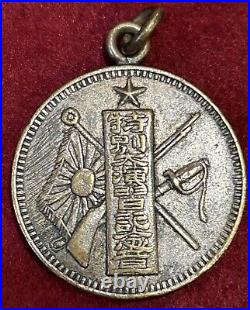
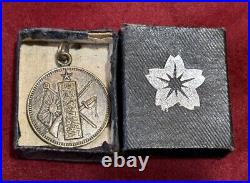
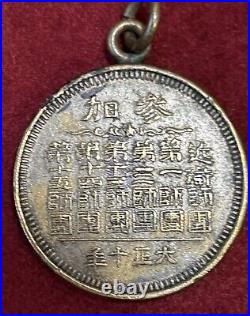
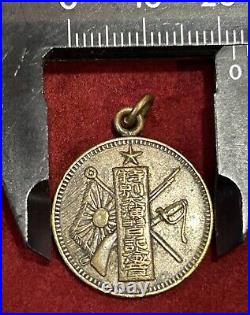
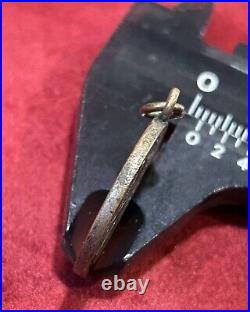
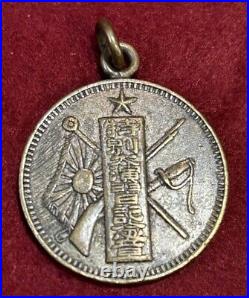

Antique Imperial Japanese medal. Rare Imperial Japanese Army Medal from 1921 Special Grand Maneuvers. Authentic antique military award with original box. Commemorates major exercises involving multiple divisions. Features rising sun, star, and weapons motifs. Excellent condition with attractive patina. 1.5 inches / 38mm in diameter. Incredible piece of early Taisho era military history. Perfect for collectors of Japanese militaria and medals. Emperor’s son (future Hirohito) oversaw these landmark maneuvers Involved over 100,000 troops, aircraft, and cutting-edge technology Simulated defense of Tokyo region against invading forces Culminated in massive mock battle along Tama River. Don’t miss this chance to own a tangible piece of pre-WWII Japanese military heritage! Questions welcome – I’m happy to provide more details on this fascinating item. It is expected to take more than a month to arrive.


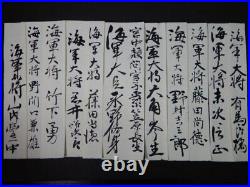
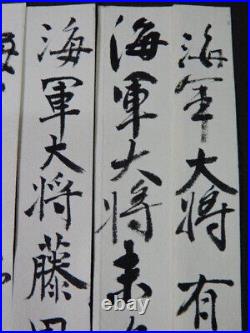


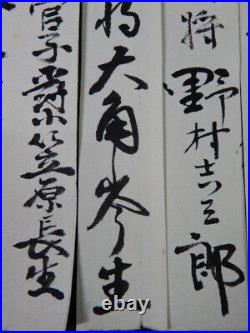

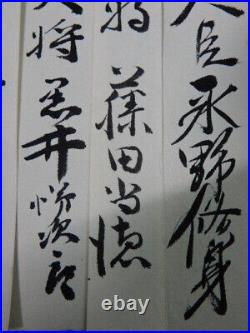
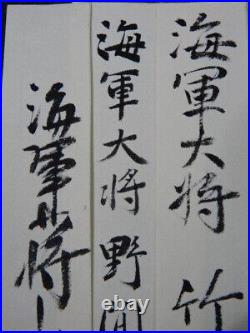



Admiral’s name strip. Of an old Japanese Navy. It’s from about taisho to showa era. These are handwritten by Kaneo Nomaguchi, Isamu Takeshita, Nobumasa Suetsugu, Ryoukistu Arima, Hisanori Fujita, Kisaburo Nomura, Mineo Osumi, Osami Nagano, and others. I think it’s amazing that so many people’s handwritten items are available. How about a military enthusiast? International Buyers – Please Note.



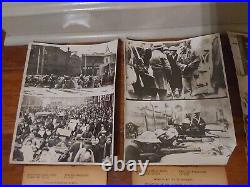
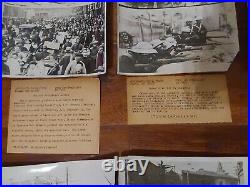
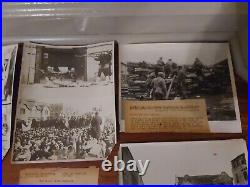
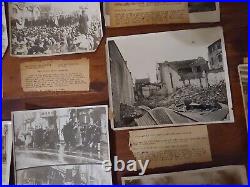
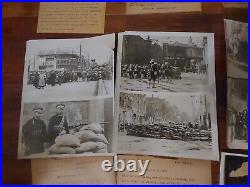
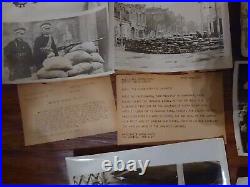
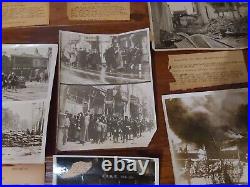

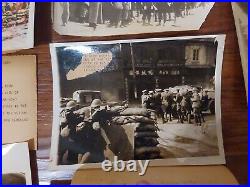
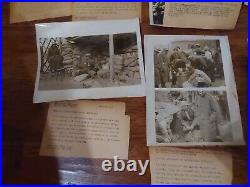
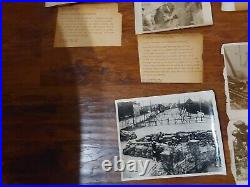
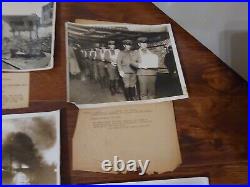
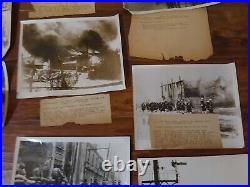
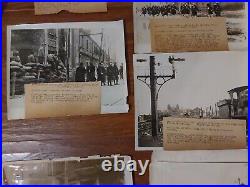
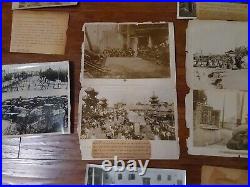

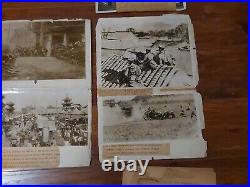
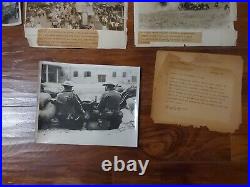
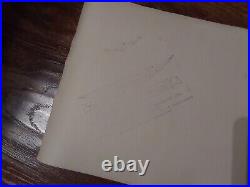
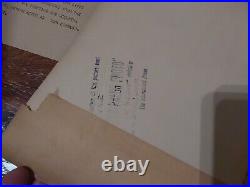
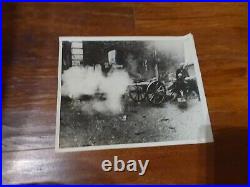

27 Press Photos 1932 China Shanghai Chapei Pre-WWII Occupation by Japanese. Nice lot of original press photos from early 1932, shortly after the Japanese began their brutal occupation of China. Most of them have the original paper captions- Many of the captions are torn off but theyre still present. A bunch of them show two images on one photo. One smaller photo has a bit of paper from another caption stuck to it but this could probably be removed. The very bottom photo might not be from China but it was with these when I got them. There are 8 photos at the bottom which are pasted on both sides of sheets of paper. Some photos are excellent others do have some wear/ missing corners. Really nice lot of ORIGINAL 1932 photos of one of the dark periods in China’s history. Most of them are 8X10 Includes some extra paper captions but I dont think any of the photos they belong with are here.





PLEASE FOLLOW OUR E BAY STORE. SALE SEE OUR STORE. PLEASE READ WHOLE ADD. Japanese Commemorative Medal of 1937 Incident Marco Polo Bridge 55 mm Diameter. Offering a Japanese commemorative medal. The medal was issued by Japan commemorating the July 7 1937 incident at the Marco Polo Bridge. The incident resulted in the Second Sino-Chinese War. Check out the photos. Marco Polo Bridge incident. Part of the Second Sino-Japanese War. Aerial photo of the Marco Polo Bridge. Is on the opposite side of the river. Start of the Second Sino-Japanese War. Disputed starting date of World War II. 100 troops at the bridge. Military campaigns of the. The Marco Polo Bridge incident, also known as the Lugou Bridge incident. Or the July 7 incident. Was a battle during July 1937 in the district of Beijing between China. S National Revolutionary Army. And the Imperial Japanese Army. Since the Japanese invasion of Manchuria. In 1931, there had been many small incidents along the rail line connecting Beijing. With the port of Tianjin. But all had subsided. In this incident, a Japanese soldier was temporarily absent from his unit opposite Wanping. And his commander demanded the right to search the town for him. The Marco Polo Bridge incident is generally regarded as the start of the Second Sino-Japanese War. And the Pacific theatre. Of World War II. In English, the battle is usually known as the “Marco Polo Bridge incident”. The Marco Polo Bridge. Is an eleven-arch granite bridge, an architecturally significant structure first erected under the Jin dynasty. And later restored during the reign of the Kangxi Emperor. Of the Qing dynasty. It gained its Western name from its appearance in Marco Polo. S record of his travels. It is also known as the “Lukouchiao”. From the local name of the bridge, derived from a former name of the Yongding River. This is the common name for the event in Japanese. Rokokyo Jiken and is an alternate name for it in Chinese and Korean. The same name is also expressed or translated as the. Battle of Lugou Bridge. In China and Korea, it is known more often as the. Tensions between the Empire of Japan. And the Republic of China. Had been heightened since the Japanese invasion of Manchuria. In 1931 and their subsequent creation of a client state, Manchukuo. The deposed Qing dynasty. Emperor, as its chief of state. After the invasion, Japanese forces extended their control further into northern China, seeking to obtain raw materials and industrial capacity. A commission of inquiry from the League of Nations. Published the Lytton Report. Which was critical of the Japanese, resulting in Japan quitting the League. (KMT) government of China refused to recognize Manchukuo but did agree to the Tanggu Truce. With Japan in 1933. Subsequently, there were various “incidents”, or armed clashes of a limited nature, followed by a return to uneasy peace. The significance of the Marco Polo Bridge incident is that, following it, tensions did not subside again; instead, there was an escalation, with larger forces committed by both sides and fighting spreading to other parts of China. With hindsight, this small incident can, therefore, be regarded as the start of a major conflict. By the terms of the Boxer Protocol. Of 7 September 1901, China had granted nations with legations in Beijing. The right to station guards at twelve specific points along railways connecting Beijing with Tianjin. This was to ensure open communications between the capital and the port. By a supplementary agreement on 15 July 1902, these forces were allowed to conduct maneuvers without informing the authorities of other nations in China. Allied Commander-in-Chief in the China theater from 1942 to 1945. By July 1937, Japan had expanded its forces in China to an estimated 7,000 to 15,000 men, mostly along the railways. This number of men, and the amount of concomitant matériel, was several times the size of the detachments deployed by the European powers, and greatly in excess of the limits set by the Boxer Protocol. By this time, the Imperial Japanese Army. Had already surrounded Beijing. On the night of 7 July, the Japanese units stationed at Fengtai. Crossed the border to conduct military exercises. Japanese and Chinese forces outside the town of Wanping. A walled town 16.4 km (10.2 mi) southwest of Beijing-exchanged fire at approximately 23:00. The exact cause of this incident remains unknown. When a Japanese soldier, Private Shimura Kikujiro, failed to return to his post, Chinese regimental commander Ji Xingwen. (219th Regiment, 37th Division, 29th Army) received a message from the Japanese demanding permission to enter Wanping to search for the missing soldier; the Chinese refused. , by this time both sides were mobilizing, with the Japanese deploying reinforcements to surround Wanping. Later that night, a unit of Japanese infantry attempted to breach Wanping’s walled defenses but were repulsed. An ultimatum by the Japanese was issued two hours later. As a precautionary measure, Qin Dechun. The acting commander of the Chinese 29th Route Army, contacted the commander of the Chinese 37th Division, General Feng Zhian. Ordering him to place his troops on heightened alert. Japanese forces bombarding Wanping Fortress. At 02:00 on 8 July, Qin Dechun. Executive officer and acting commander of the Chinese 29th Route Army, sent Wang Lengzhai, mayor of Wanping. Alone to the Japanese camp to conduct negotiations. However, this proved to be fruitless, and the Japanese insisted that they be admitted into the town to investigate the cause of the incident. At around 04:00, reinforcements of both sides began to arrive. The Chinese also rushed an extra division of troops to the area. Within five minutes of Wang’s return, a shot was heard, and both sides began firing. Thus marking the commencement of the Battle of Beiping-Tianjin. And, by extension, the full scale commencement of the Second Sino-Japanese War. At 04:50 on 8 July 1937. Led the Chinese defenses with about 100 men, with orders to hold the bridge at all costs. The Chinese were able to hold the bridge with the help of reinforcements, but suffered tremendous losses. At this point, the Japanese military and members of the Japanese Foreign Service began negotiations in Beijing with the Chinese Nationalist government. A verbal agreement with Chinese General Qin was reached, whereby. An apology would be given by the Chinese to the Japanese. Punishment would be dealt to those responsible. Control of Wanping would be turned over to the Hopei. And not to the Chinese 219th Regiment. The Chinese would attempt to better control “communists” in the area. This was agreed upon, though Japanese Garrison Infantry Brigade commander General Masakazu Kawabe. Initially rejected the truce and, against his superiors’ orders, continued to shell Wanping for the next three hours, until prevailed upon to cease and to move his forces to the northeast. Although a ceasefire had been declared, further efforts to de-escalate the conflict failed, largely due to actions by the Chinese Communists. And the Japanese China Garrison Army. Due to constant Chinese attacks, Japanese Garrison Infantry Brigade commander General Masakazu Kawabe. Ordered Wanping to be shelled on 9 July. The following day, Japanese armored units joined the attack. The Chinese 219th regiment staged an effective resistance, and full scale fighting commenced at Langfang. After launching a bitter and bloody attack on the Japanese lines on the 27 July, General Sung was defeated and forced to retreat behind the Yongding River. By the next day. Main article: Battle of Beiping-Tianjin. On 11 July, in accordance with the Goso conference, the Imperial Japanese Army General Staff. Authorized the deployment of an infantry division. From the Chosen Army. Two combined brigades from the Kwantung Army. And an air regiment composed of 18 squadrons as reinforcements to Northern China. By 20 July, total Japanese military strength in the Beiping-Tianjin area exceeded 180,000 personnel. The Japanese gave Sung and his troops “free passage” before moving in to pacify resistance in areas surrounding Beijing and Tianjin. After 24 days of combat, the Chinese 29th Army was forced to withdraw. The Japanese captured Beiping and the Taku Forts. At Tianjin on 29 and 30 July respectively, thus concluding the Beiping-Tianjin campaign. However, the Japanese Army had been given orders not to advance further than the Yongding River. In a sudden volte-face. The Konoe government’s foreign minister opened negotiations with Chiang Kai-shek. S government in Nanjing and stated: Japan wants Chinese cooperation, not Chinese land. Nevertheless, negotiations failed to move further. On 9 August 1937, a Japanese naval officer was shot in Shanghai. Escalating the skirmishes and battles into full scale warfare. The 29th Army’s resistance (and poor equipment) inspired the 1937 Sword March. , which-with slightly reworked lyrics-became the National Revolutionary Army. S standard marching cadence. And popularized the racial epithet. To describe the Japanese invaders. Damage from the Japanese shells on the wall of Wanping Fortress is marked with a memorial plaque now. The texts on the stone drums below summarizes the history of the war that followed the incident. The heightened tensions of the Marco Polo Bridge incident led directly to full-scale war between the Empire of Japan. With the Battle of Beiping-Tianjin. At the end of July and the Battle of Shanghai. In 1937, during the Battle of Beiping-Tianjin. The government was notified by Muslim General Ma Bufang. Of the Ma clique. That he was prepared to bring the fight to the Japanese in a telegram message. Immediately after the Marco Polo Bridge incident, Ma Bufang arranged for a cavalry division under the Muslim General Ma Biao. To be sent east to battle the Japanese. Ethnic Turkic Salar Muslims. Made up the majority of the first cavalry division which was sent by Ma Bufang. 7 July 1937 is sometimes given as an alternative starting date for World War II. As opposed to the more commonly-cited date of 1 September 1939, when Germany invaded Poland. Starting the European theatre of the war. In 1987, the bridge was renovated and the People’s Anti-Japanese War Museum. Was built near the bridge to commemorate the anniversary of the start of the Sino-Japanese War. There is debate over whether the incident could have been planned like the earlier Mukden incident. Which served as a pretext for the Japanese invasion of Manchuria. According to Jim Huffman this notion has been “widely rejected” by historians, as the Japanese would likely have been more concerned over the threat posed by the Soviets. Controversial conservative Japanese historian Ikuhiko Hata. Has suggested that the incident could have been caused by the Chinese Communist Party. Hoping it would lead to a war of attrition. Between the Japanese army and the Kuomintang. However, he himself still considers this less likely than the “accidental shot” hypothesis, that the first shot was fired by a low-ranking Chinese soldier in “an unplanned moment of fear”. National Revolutionary Army (Kuomintang). See also: National Revolutionary Army. In comparison to their Japanese counterparts, the 29th Route Army, and generally all of the NRA for that matter, was poorly equipped and under-trained. Most soldiers were armed only with a rifle and a dao. A single-edged Chinese sword. Similar to a machete. Moreover, the Chinese garrison in the Lugouqiao area was completely outnumbered and outgunned; it consisted only of about 100 soldiers. Commander of 29th Army. Legislative Committee Head of Peking security forces. Vice-Commander of 29th Army. General Tong Lin’ge. Commander of the 143rd Division. General Feng Zhi’an. Commander of the 37th Division. Commander of the 132nd Division. Commander of the 38th Division. Commander of the 219th Regiment under the 110th Brigade of the 37th Division. The Japanese China Garrison Army. Was a combined force of infantry, tanks. Which had been stationed in China since the time of the Boxer Rebellion. Its headquarters and bulk for its forces were in Tianjin, with a major detachment in Beijing to protect the Japanese embassy. Lieutenant General Kan’ichiro Tashiro. Commander China Garrison Army. Major General Masakazu Kawabe. Commander China Garrison Infantry Brigade. Commander 1st Infantry Regiment. Commander, 3rd Battalion, 1st Infantry Regiment. W of Marco Polo Bridge, 510 men.


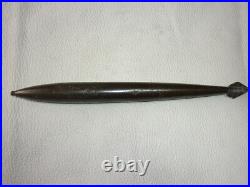
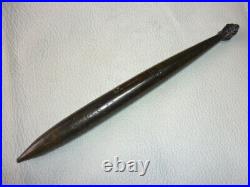
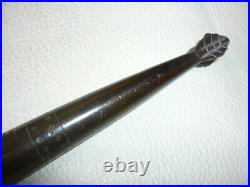

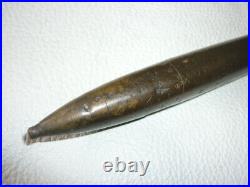
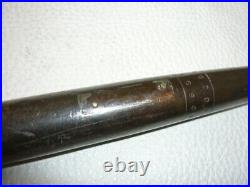
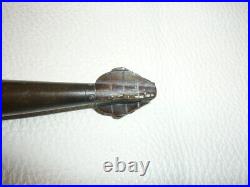

Paperweight of the old Japanese navy. This torpedo-shaped souvenir was distributed to military personnel at the Imperial Volunteer Fleet Construction Commemoration Tournament held around 1933 (Showa 8). It is made using copper spoils from the Russo-Japanese War. Originally ther e is a body plate, but it is missing and there is no plate. There is a slight ch ip on the screw part and some scratches overall. Material: Made of brass. Size: Total length 22cm, maximum diameter 1.9 cm, weight 180g. How about military collector? International Buyers – Please Note.


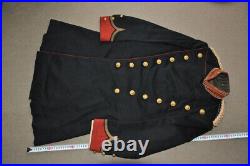


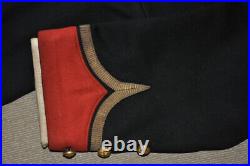
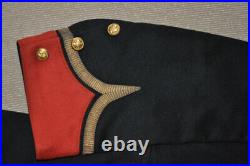
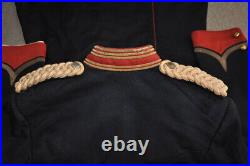

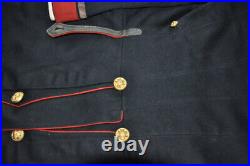
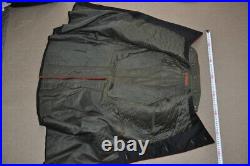


This is the original court uniform of a special infantry sergeant major from the Meiji and Taisho eras of the former Japanese Army. The molding at the base of the collar is frayed, and the threads attaching the molding have deteriorated considerably, causing the molding to fall off. There are insect bites on the red fabric on the sleeves. The epaulets are the ones that were on it when I got it. Sleeve length approximately 55cm, shoulder width approximately 40cm, length approximately 87cm. How about a military collector? International Buyers – Please Note.






































































































